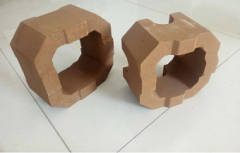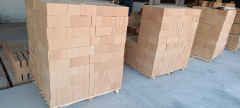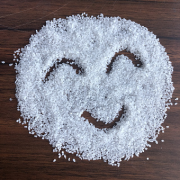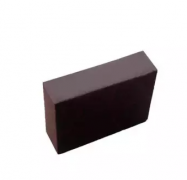refractory solutions
Refractory solution for blast furnaces
Refractory for blast furnace
Blast furnace is the main equipment of iron making, it has the advantages of large output, high productivity and low cost, which is unmatched by other iron making methods.
With the progress of the iron and steel industry in various countries in the world, blast furnaces are developing towards large-scale, high-efficiency and longevity, and new smelting technologies such as oxygen-enriched coal injection, high-air temperature operation, and high-pressure furnace top are gradually adopted. The working conditions of blast furnace lining have undergone major changes, and its service life has been reduced a lot, generally only 5 to 6 years. In particular, the lower part of the blast furnace body and the furnace body and the furnace body part have a shorter service life. In order to adapt to this development, the refractory materials for blast furnaces have also undergone great changes. New and high-efficiency refractory materials with long lifespan are gradually applied, and the life of blast furnaces is gradually increased.
According to the operating conditions and corrosion characteristics of the blast furnace lining, the refractory materials are required to have:
1 Good high temperature performance, good thermal stability under long-term high temperature.
2 The strength at room temperature and high temperature should be higher, and the wear resistance should be better.
3 High density, good thermal conductivity, low apparent porosity, and small shrinkage at high temperature.
4 It can resist the violent erosion and erosion of molten iron, slag, blast furnace gas and furnace dust under high temperature and high pressure.
5 The refractory bricks have accurate external dimensions and can ensure that the brick joints meet the specified requirements.
At present, there are many varieties of refractory materials for blast furnaces. The middle and upper parts of the furnace body are generally made of clay bricks or high alumina bricks with excellent performance. Special refractories such as corundum bricks, especially the recently developed silicon carbide bricks, have been successfully applied in blast furnaces. At the same time, other amorphous refractories have also been widely used.
System solutions for the longevity of refractory materials for blast furnaces and hot blast stoves
The longevity of the hearth is the common purpose of many scholars and experts in the refractory industry to study the refractory lining. With the continuous progress of iron and steel smelting technology, the requirements for refractory materials have also increased. How to make refractory materials work in harsh working environments? To obtain long-term operation, please refer to the following solutions:
System solutions for hearth longevity:
①Reliable hearth system design, reasonable structure, effective heat transfer system, few interfaces, and no weak links;
②Choose carbon bricks with sufficient thermal conductivity and resistance to slag iron corrosion;
③ Effective drainage facilities are installed in the hearth to prevent the development of air gaps in the hearth and affect heat transfer;
④ Set up a complete monitoring system and intelligent management system to respond to abnormal situations in a timely manner;
⑤ Strictly control the construction quality, turn the good design into reality, and lay a good foundation for the longevity of the blast furnace;
⑥ Effectively control the damage and water leakage of cooling equipment to prevent water leakage from entering the hearth carbon brick area;
⑦ Use good raw fuel to ensure the hearth activity and gas permeability and liquid permeability, and ensure the stable and forward running of the blast furnace;
⑧ Reasonable hearth maintenance, regular and effective drainage, and strict control of hearth grouting.
-

Main properties of magnesium oxide refractory
Performance characteristics of magnesia refractories and other basic refractories Performance characteristics of magnesia refractories and other basic refractories Refractories containing more than 80% ... -

What properties of lightweight insulation fire clay bricks can be improved by the addition of kyanite?
Lightweight insulation fire clay bricks are a kind of shaped refractory material with clay as the main raw material, which is processed, shaped, dried, and calcined with clay. on the kiln. Due to the r ... -

How is the effect of white fused alumina abrasive used in refractory materials?
After mixing, forming, drying, and firing at high temperature in a shuttle kiln. The product has the characteristics of high refractoriness, good thermal shock stability of white corundum, high high te ... -

Characteristics of refractory magnesia chrome bricks for lime kiln
Lime kilns are mainly classified into square kilns and circular kilns. According to the classification of fired products, they can be divided into lime kilns, ceramic kilns, cement kilns, glass kilns, ...

